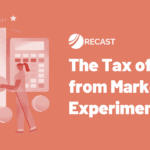With digital tracking breaking since iOS14, the death of the cookie, and new privacy laws like GDPR and CPRA, media buyers seem to be scrambling for any way to better target their audience and to accurately measure their campaign’s impact. Data clean rooms have been proposed as a solution to this issue, but are they?
In this article, we will explore the concept of data clean rooms and their effectiveness in solving the attribution problem.
The Rise of Data Clean Rooms
As advertisers look for ways to gather and analyze user data to improve their marketing campaigns, concerns over data privacy have become more and more relevant. Data clean rooms are meant to be a potential solution to help media buyers follow privacy regulations by sharing user data in a secure environment without revealing any personally identifiable information (PII).
At a high level, here’s how they work:
Most data clean rooms operate in a SaaS model in the cloud so that content providers and advertisers can work together and collaborate. The content provider has the first-party user data, and they send it to the clean room where it can be encrypted, anonymized, and classified into different demographics.
From there, all the approved partners can access the data and leverage it in their campaigns without privacy infringements. It’s a potential last resource against the decline of cookies and overall digital tracking.
The Pros and Cons of Data Clean Rooms
Data clean rooms have three key value props and four potential shortcomings.
PROs:
- Greater accuracy in matching user-level data
Traditional tracking pixels can miss critical information and provide incomplete data. Data clean rooms match data with a high degree of accuracy which can really help media buyers make more educated decisions and optimize their campaigns more effectively.
- Maintain privacy and protect consumer data.
As privacy concerns around data privacy continue to be more and more critical and regulations like GDPR and CCPA require compliance, this is a key value proposition for data clean rooms. They use privacy-preserving techniques to make sure that personal information is not revealed or misused, providing a safe and secure environment for data sharing.
- Collaboration between advertisers.
This helps advertisers share data without revealing PII. If you have multiple advertisers working on the same campaign or targeting the same audience, this can be quite beneficial.
CONs:
- Only provide aggregate results.
While data clean rooms can match user-level data with a high degree of accuracy, they only provide aggregate results. That complicates measuring the impact on conversions of specific channels and individual campaigns.
- Removal of the ability to decontaminate.
Data is shared among multiple parties, and once it’s in the clean room, it cannot be altered or removed. That’s problematic because it makes it impossible for advertisers to decontaminate data so they can remove fraudulent or bot-generated data from their analysis.
- Inability to understand the full effect of media on a campaign goal.
While data clean rooms provide valuable insights into user behavior, they only provide partial insights into the impact of media on a campaign goal. They’re still facing the same broken digital tracking problem and can’t follow the user journey across different touchpoints.
- Only as good as the data you have and the common matching keys.
The effectiveness of data clean rooms is limited by the quality of the data and the common matching keys that all parties bring to the table. If the data quality is poor or the common matching keys are not aligned, the accuracy of the results will be affected. Biased data often leads to biased decision-making.
Do Data Clean Rooms Solve the Attribution Problem?
Data clean rooms are presented as a way to potentially overcome data privacy concerns and still get to match user-level data with a high degree of accuracy.
However, they do not completely solve the attribution problem since we know that consumers’ behavior is influenced by multiple touchpoints and channels. Data clean rooms can only provide aggregate results, which makes it very challenging to determine the exact contribution of each touchpoint in the customer’s journey.
Because of all the downfalls we mentioned above, we recommend media buyers find different ways to manage privacy regulations and measure attribution more accurately.
The Future of Attribution
There are three levels of measurement that marketers should focus on:
1 – Business growth: focus on the impact of their campaigns on overall business growth, such as revenue, customer lifetime value, and market share.
2 – Campaign success: measure the success of individual campaigns based on specific goals, such as leads generated, sales made, or app installs.
3 – Optimization:use data science to draw lines between business growth and campaign success, allowing them to optimize campaigns for maximum impact.
The relationship between these three levels is critical. By establishing links between business growth and campaign success, marketers can better understand the impact of their campaigns and make informed decisions about attribution.
Now that media buyers can’t perform fine-grained digital attribution at the customer level, methods that don’t rely on digital tracking are also more valuable than ever. Recast clients are finding great success by using a more evolved version of MMM that focuses on incrementality in both programmatic and non-programmatic channels.
Conclusion:
In conclusion, data clean rooms may provide some benefits, but they do not completely solve the attribution problem. You do get greater accuracy on matching user-level data, better collaboration between advertisers, and fewer privacy limitations; but you’re still only getting aggregate results, you can’t decontaminate the data, and it is limited by its quality and the common matching keys.
Broken digital tracking will require a radical skillset change for media buyers and the adoption of revolutionized MMM so you can make more informed decisions and deploy your budgets more effectively.



